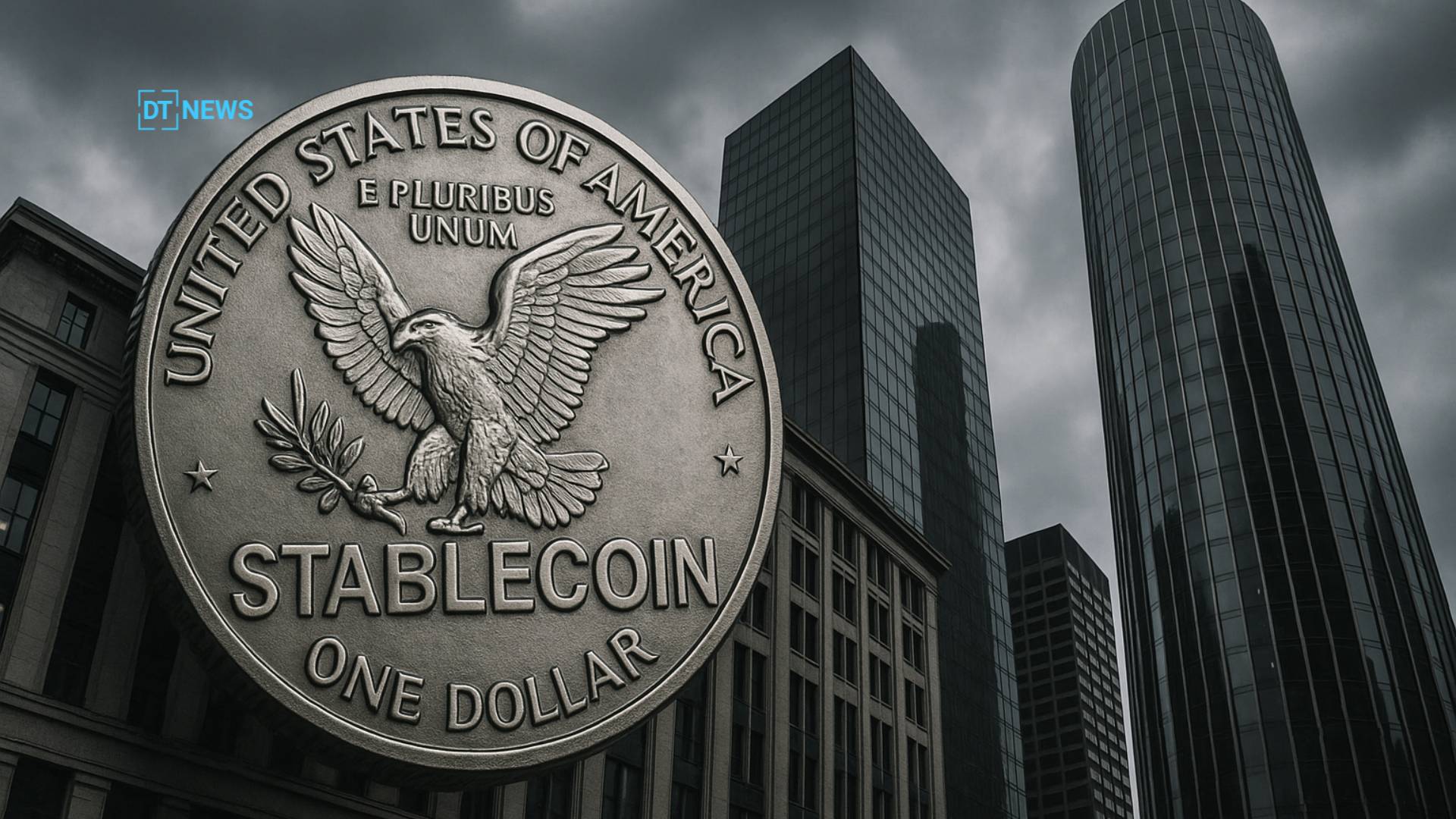According to sources, the GENIUS Act stablecoin yield loophole leaves a major gap in U.S. financial oversight. The group, backed by the American Bankers Association and the Consumer Bankers Association, told Congress that although the law stops stablecoin issuers from paying interest.
- What is the loophole in the GENIUS Act?
- Why are U.S. banks pushing for changes?
- How could this affect credit creation?
- What do industry experts say?
- What’s next for stablecoin regulation?
- Conclusion
- FAQs
- 1. What does the GENIUS Act stablecoin yield loophole allow?
- 2. Who raised concerns about the loophole?
- 3. How much money could move from banks to crypto?
- 4. When was the GENIUS Act approved?
- 5. How are stablecoins different from bank deposits?
- 6. What do banks want Congress to do?
- 7. Who will issue further guidance on the law?
- Glossary
- Sources
It doesn’t stop related exchanges or partner companies from doing it. They warned this could weaken the safeguards Congress wanted and give companies a clear way around the rules.
What is the loophole in the GENIUS Act?
The GENIUS Act stablecoin yield loophole is a gap in the law. Although the legislation bans stablecoin issuers from paying interest directly, it doesn’t stop their affiliates or partner platforms from doing exactly that.

In effect, these third parties can offer returns to users, something the law intended to block. This gap in the GENIUS Act lets stablecoin companies offer earnings to customers in an indirect way.
It gives stablecoin issuers an easier way to offer returns, while regular banks have to follow tough rules for deposits and lending. If this gap isn’t closed, the law’s protections will weaken, and it could put the banking system’s stability at risk.
Why are U.S. banks pushing for changes?
Banking groups think the GENIUS Act stablecoin yield loophole could cause huge amounts of money to leave banks. The Treasury Department earlier estimated that stablecoins offering yields could move up to $6.6 trillion from banks into crypto.
A rise in customer withdrawals is putting pressure on banks, reducing the funds they have available to lend. Financial analysts warn that this could slow down credit growth and push borrowing costs higher, potentially affecting both households and businesses in the coming months.
| Metric | Details |
| Legislation Name | GENIUS Act |
| Date Signed into Law | July 18, 2025 |
| Main Loophole | Issuers yield via affiliates/exchanges despite ban |
| Concern by U.S. Bank Groups | Deposit outflows, competition gap, stability risks |
| Potential Deposit Outflows Risk | Up to $6.6 trillion |
| Stablecoin Market Cap | $280.2 billion |
| Projected Stablecoin Market Cap | $2 trillion |
| Major Stablecoin Issuers Covered | Circle (USDC), Tether (USDT) |
| Banks Involved | BPI, ABA, Financial Services Forum |
| Proposed Fix | Ban yield via affiliates/exchanges |
How could this affect credit creation?
According to BPI, stablecoins work very differently from bank deposits or money market funds. They don’t issue loans, and they don’t keep their value in the kind of regulated investments those traditional options rely on.
If the GENIUS Act stablecoin yield loophole is not closed, the ability to create credit could drop during times of financial stress.
The report warns, “A higher risk of deposits leaving means fewer loans, higher interest rates, and costlier financing for everyday businesses and households.”
What do industry experts say?
Stephen Aschettino, a partner at Steptoe, cautioned that the GENIUS Act stablecoin yield loophole has the potential to quickly reshape the market.

He explained how stablecoins are intended to be used plays a big role. “If the main aim is to attract users by promising yields, it puts serious competitive pressure on traditional banks,” he noted.
At the same time, compliance specialists argue that letting affiliates offer interest could weaken the GENIUS Act’s main goal of stopping unregulated yield products from slipping into payment systems.
What’s next for stablecoin regulation?
Even though the law was approved in July, putting it fully into action may take years because regulators still have to set detailed rules.
The Office of the Comptroller of the Currency and the Treasury Department are expected to give more guidance, which could directly deal with the GENIUS Act stablecoin yield loophole.
Until that happens, experts say issuers like $USDC and large banks will be watching closely to decide if they should launch their own stablecoins or work with those already in the market.
Conclusion
According to the latest research, the GENIUS Act stablecoin yield loophole is still a big worry for U.S. banks. They believe shutting it down would help protect the regular lending system and make sure stablecoins follow the same safety rules as other financial products.
Lawmakers are now weighing the good and bad sides of stablecoins, but this loophole is expected to stay a key topic in the debate over the future of digital money in America.
Summary
U.S. banks, supported by the Bank Policy Institute, say the GENIUS Act stablecoin yield loophole could harm the financial system. The law blocks stablecoin issuers from paying interest directly, but their partner companies can still do it.
This could move up to $6.6 trillion from banks into crypto, reducing banks’ ability to lend, pushing interest rates higher, and making borrowing more expensive. Experts believe the loophole should be closed to protect credit markets, and regulators are planning more rules for stablecoins.
Stay updated on the latest GENIUS Act news and its impact on the U.S. and crypto markets on our platform.
FAQs
1. What does the GENIUS Act stablecoin yield loophole allow?
It lets partner companies or affiliates of stablecoin issuers offer interest, even if issuers can’t.
2. Who raised concerns about the loophole?
The Bank Policy Institute, backed by major U.S. banking groups.
3. How much money could move from banks to crypto?
Up to $6.6 trillion, according to the Treasury Department.
4. When was the GENIUS Act approved?
It was approved in July 2025.
5. How are stablecoins different from bank deposits?
They don’t issue loans or hold regulated investment reserves.
6. What do banks want Congress to do?
Close the loophole to protect credit markets and financial stability.
7. Who will issue further guidance on the law?
The Office of the Comptroller of the Currency and the Treasury Department.
Glossary
Bank Policy Institute – A U.S. banking trade group representing major banks.
Borrowing Costs – The total expense of taking a loan, including interest.
Credit Creation – The process by which banks use deposits to issue loans.
Regulated Investments – Assets overseen by financial authorities to ensure safety and stability.
Treasury Department – A U.S. government agency managing financial and economic policy.
Yield – Earnings generated on an asset, typically shown as a percentage.
Affiliate – A company linked to a stablecoin issuer that can offer related services, such as interest payments.



















































































































